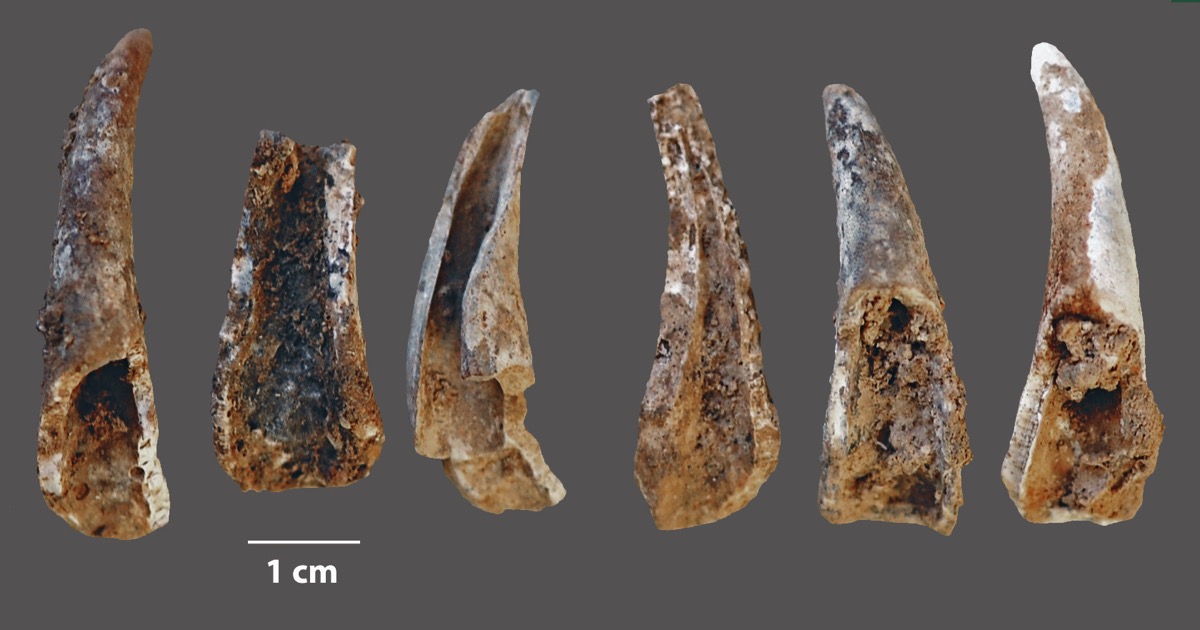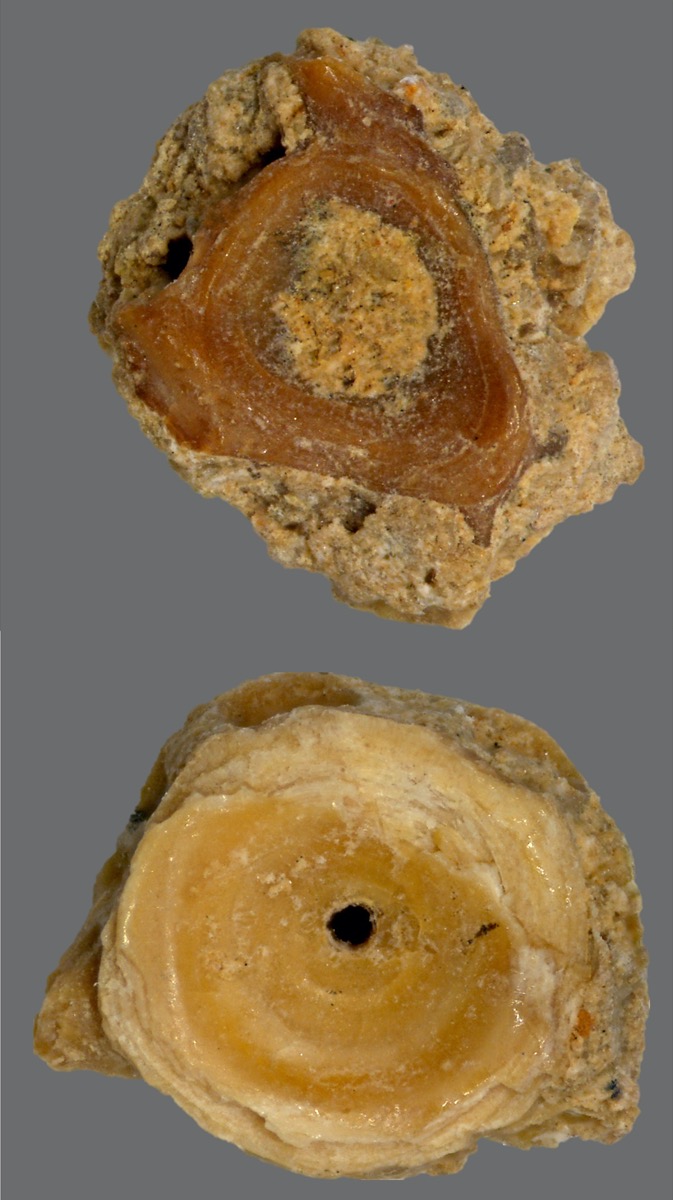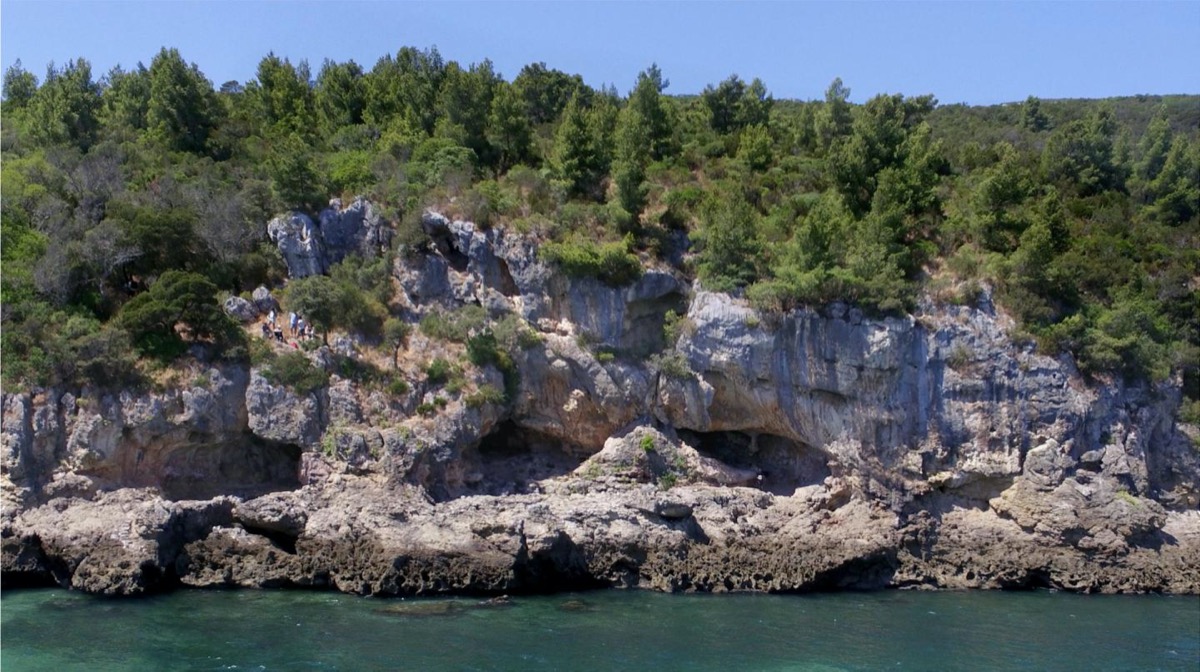Neanderthals Feasted On Fish Just Like Us
11:38 minutes

Why did Neanderthals disappear so quickly after the arrival of early modern humans in Europe, 40,000 years ago? Paleoanthropologists have long wondered whether it was some inferiority that allowed our ancestors to outcompete with Neanderthals for resources—whether that was intelligence, complexity, or some other measure of fitness.

Over the last two decades, the image of the dumb, primitive Neanderthal has broken down. Researchers have found evidence of Neanderthal jewelry and art in European caves, as well as signs they may have buried their dead.
But the question remains: Why, when human ancestors finally made it to Europe, did Neanderthals vanish? One persisting theory is that getting Omega-3 fatty acids from diets rich in seafood enabled human ancestors to develop more advanced brains than their Neanderthal cousins. Stashes of fish bones and shells in South African caves have been taken as evidence that early modern humans ate from the sea—and until now, there’s been no evidence that Neanderthals in Europe also did so.
But, in a seaside cave in Portugal named Figueira Brava, researchers writing for the journal Science last month found a treasure trove of fish bones, mussel shells, and other remnants of dining from the sea—all older by tens of thousands of years than the first arrival of early modern humans in Europe. Lead author João Zilhão explains how this find expands the growing picture of Neanderthals as complex, intelligent hominins.

*Correction 4/3/2020: A previous version of this page and a tweet incorrectly identified the location of the finding. The discovery was in Portugal. The two of the captions and a photo were also updated with correct information. We regret the error.
Invest in quality science journalism by making a donation to Science Friday.
João Zilhão is an ICREA (Catalan Institution for Research and Advance Studies) Research Professor at the University of Barcelona in Barcelona, Spain.
IRA FLATOW: This is Science Friday. I’m Ira Flatow. A bit later in the hour, we’ll talk about how some hospitals are preparing for an unexpected flood of patients, and how they’re dealing with a shortage of personal protective equipment. Just a note, we won’t be taking calls during this recorded hour.
Up first, since they were first discovered, Neanderthals, our much maligned ancient cousins, have been cast as inferior. After all, they quickly disappeared from Europe after the arrival of human ancestors from Africa 40,000 years ago. But over the last couple of decades, the stereotype of the dumb, primitive Neanderthal has been broken.
For example, jewelry and art have been found in caves all too old to belong to anyone but Neanderthals. And then there’s the fact that they interbred with human ancestors. And traces of their genetic material live on in our genes. Yet, the big question remains. Where did they go? Why, when human ancestors finally made it to Europe, did Neanderthals vanish?
One persistent theory, omega 3 fatty acids from a seafood diet of our human ancestors allowed them to develop more advanced brains than their Neanderthal cousins. But here’s where things get interesting, because, in a cramped cave in Portugal named Figueira Brava, evidence has been discovered that Neanderthals too ate from the sea. The news was published in the Journal of Science last week. Science Friday producer, Christie Taylor spoke to Dr. Joao Zilhao, a research professor for the Catalan Institute for Research and Advanced Studies at the University of Barcelona in Spain.
CHRISTIE TAYLOR: Welcome to Science Friday.
JOAO ZILHAO: Hi, good morning, or good afternoon, or good evening, wherever you are depending on the time zone.
CHRISTIE TAYLOR: So the first thing I want is for you to take us to this cave. What is it like there?
JOAO ZILHAO: The cave is at the edge of the sea these days. So when you’re there, you’re at the edge of the terrace in front of the cave itself. There’s a five meter step, and the sea’s just down there. And you can bathe. You can watch the fish and the dolphins swim by.
But it’s actually a bit misleading, an image that is a bit misleading if you want to think about the site in terms of what it looked like 100,000 years ago, when it was used by Neanderthals. At that time, the sea level was lower. And as a result, the shore was some distance away, between 750 and 2,000 meters away. So you have to picture the site as being halfway on a slope along the side of something like a Norwegian fjord.
CHRISTIE TAYLOR: And like you said, that cave was once occupied by Neanderthals. So you went there looking for more evidence of their lives?
JOAO ZILHAO: Yeah, the what triggered this our project was a previous investigation at this site had returned with carbon dates suggestive of the site being inhabited by Neanderthals as recently as 30,000 years ago. And this was an interesting scientific problem, because, if true, it would represent a persistence of Neanderthals in our part of the world for about 10,000 years longer than elsewhere in Europe.
So we were intrigued by this and decided to build a project aimed at proper dating of the site. And it was in the process of this that we realized that the part of the site that had not yet been excavated was extremely rich in the remains of marine foods. So when the first dating results that we obtained using the different methods– uranium series– showed that the site was of the last interglacial age, so that it was contemporaneous with the famous middle Stone Age sites of South Africa, like Blombos, Klasies River, and others.
CHRISTIE TAYLOR: You said this dates to the last interglacial. How long ago exactly was that?
JOAO ZILHAO: The last interglacial is a period of broadly similar climate to the present, which began about 135,000 years ago and ended about 72,000 years ago. It’s a long period of time, about 60,000 years. Our site was occupied towards the end of this period, between about 86,000 and 106,000 years ago. On land, the environments were pretty similar to the present time, so a Mediterranean landscape, as we have today.
CHRISTIE TAYLOR: You mentioned this trove of marine food, including a shark vertebrae, which was the first one– the first bone that you found. How did you know that this was a significant finding?
JOAO ZILHAO: People in places like southern Africa at this time had been harvesting seafoods in significant amounts, particularly limpets, mussels, and also doing some seal hunting and some fishing. But this was not known in Europe. And because the people living in South Africa at this time are designated as early modern humans, whereas in Europe we are talking about the Neanderthals who, for most people, are an addendum, a not fully human at least side branch of human evolution, this was not known, OK?
And so the hypothesis was put forth by some colleagues– and this is a hypothesis that became very influential– that it had been the consumption of marine foods, because they are rich in fatty acids like omega 3 and such stuff, that would have favored the development of brain tissue and somehow resulted in higher cognitive abilities among the people– so-called early anatomically modern people living in southern Africa.
And as a result of these enhanced cognitive capabilities, they would have been able to grow in population numbers. Their societies would have become more complex. Their technology evolved faster and to higher levels of efficiency than elsewhere in the world. And so these populations, as a result, expand and, because they are superior, eventually wipe out everybody else as they expand to Europe and Asia, and everybody else obviously including the Neanderthals. For Neanderthals to feed on marine resources was a key aspect of this model.
And what we have shown– and this is why as soon as we started finding lots of fish remains and large crab remains, it became obvious to us that this was an artifact of sampling. And what this tells us is that, as often is the case, absence of evidence is not evidence of absence. You just have to look in the right place. And what you thought did not exist or could not exist, in fact, does. So this business of the consumption of marine foods cannot serve as an explanation for what happened when people of ultimate African origin began to spread into Eurasia.
CHRISTIE TAYLOR: If there were no fundamental differences between these two groups of human ancestors, do you think we’ll ever figure out why they died out?
JOAO ZILHAO: So we’re talking of a population imbalance in terms of numbers, of 1 to 100. For each Neanderthal living in Europe, that would be 100 Africans. There were much less people in Europe than in Africa. But there are very few people everywhere anyway, OK?
So as soon as that is the situation, the different phenotypes maintain their characteristic features. Neanderthals continue being Neanderthals. People living in Africa continue to be whatever you want to call them, right? But as soon as populations on both sides grow, along the frontiers or the boundaries that existed before and across which gene flow always existed, even if in limited amounts, exchange of all kinds become more frequent and more intensive.
What you had before is two reservoirs effectively merging to one. And when you do that and the imbalance is 100 to 1, what’s going to happen to the one? It’s going to be absorbed. That’s what happened to the Neanderthals. They did not die out. They were incorporated in the larger, if you want to call it that way, modern human population that, as a result– formed as a result of these admixture events. And that is why 70% of their genome is still around.
CHRISTIE TAYLOR: Last question, and that’s just, what is your dream find? What is the cave or other site that you would love to unearth? What’s the data in there? What does it tell us? What are the bones? What’s in there?
JOAO ZILHAO: I’ve been fortunate enough in the course of my professional career to have found the earliest anatomically modern humans in Europe. I excavated the Pestera Cu Oase in Romania, where we found these fossils that have been subsequently studied by geneticists. And before the burial of the Lagar Velho child in Portugal, which was actually the first hard evidence for admixture between Neanderthals and modern humans published 20-22 years ago already.
And I’ve been involved in the dating of cave art showing that Neanderthals were cave artists. And now, this business with the marine foods, I don’t think I can have the right to expect anything else. I’m satisfied, more than satisfied. I consider myself extremely lucky to have been involved in these findings.
CHRISTIE TAYLOR: Well, congratulations. And thank you so much for being with us today.
JOAO ZILHAO: My pleasure. Thank you for your interest and attention.
IRA FLATOW: That’s producer Christie Taylor speaking with Dr. Joao Zilhao, a research professor for the Catalan Institute for Research and Advanced Studies. He’s based at the University of Barcelona in Spain.
Copyright © 2020 Science Friday Initiative. All rights reserved. Science Friday transcripts are produced on a tight deadline by 3Play Media. Fidelity to the original aired/published audio or video file might vary, and text might be updated or amended in the future. For the authoritative record of Science Friday’s programming, please visit the original aired/published recording. For terms of use and more information, visit our policies pages at http://www.sciencefriday.com/about/policies/
Christie Taylor was a producer for Science Friday. Her days involved diligent research, too many phone calls for an introvert, and asking scientists if they have any audio of that narwhal heartbeat.